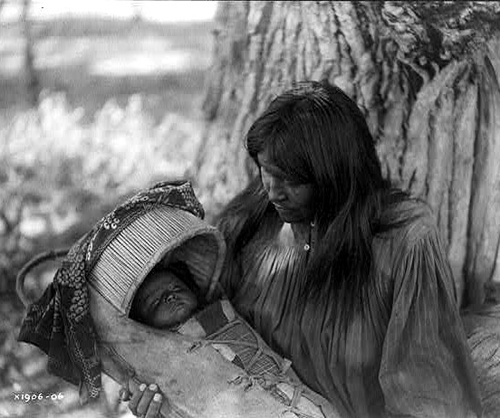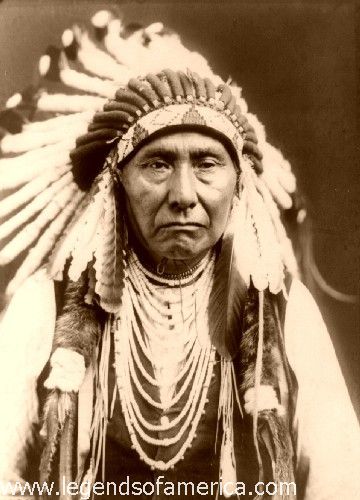
The Indian Removal Act of 1830 was signed by Andrew Jackson on May 28, 1830. The act enabled the federal government to remove, forcibly if necessary, Indian tribes from their homelands currently existing within state borders in exchange for unsettled land west of the Mississippi. Some tribes went peacefully, but many other tribes, including the Cherokee, resisted and were forcibly relocated. Approximately 4,000 Cherokee Indians died along the infamous march in the fall and winter of 1838 and 1839 along the "Trail of Tears."
The following address is the a copy, provided by the Library of Congress, of the actual Indian Removal Act of 1830. This link was specifically helpful in that it allowed me to view the actual document allowing the federal government to forcibly remove a private nation from their own land.
Basically, this act in its own words allows the President of the United States to state all Native American claims their lands forfeit with the acknowledgment that any lands acquired by the Native Americans from exchanges shall remain in the hands of their people forever unless the Native Americans with these exchanges become extinct or abandon the land of their own free will. The act enabled the President to acknowledge and offer just compensation for capital improvements made by the Native Americans as well as assistance in moving and sustaining themselves from their previous settlement to their new exchanged settlement including protection from other Native Americans or any persons thereof. The act finalizes itself by by offering 500,000 dollars to be paid out of any money in the treasury not already appropriated to the Native Americans for the exchange of their land.
Unfortunately, I, a mere student, can see a lot of loop holes in this piece of legislation. The act allows the President to declare all Native American lands east of the Mississippi forfeit forcing them to be removed west to unsettled territory. The President may elect to offer assistance (most likely military) to those moving so that they might reach their destination and, if the President decides, may receive add from the federal government for supporting themselves for the first year of the stay on the new property. The act also states that a sum of 500,000 dollars would be appropriated to the Native Americans to be paid out of any money in the treasury that is NOT OTHERWISE APPROPRIATED. So basically, if Congress appropriates all of the money in the treasury for some project or another, there will be no more money to be appropriated to the Native Americans.
This is perhaps the most discriminatory Congressional act in American history involving Native Americans, because this single document has allowed the federal government to continually discriminate against the Native American people without repercussion. Where the three-fifths provision in the United States Constitution allowed the federal government to count African American slaves as three-fifths of a white man, the Indian Removal Act of 1830 allowed the federal government to dictate where an entirely different nation could live. While both are equally discriminatory, the African American people gained their freedom in the 1970s. The Native American NATIONS still do not have that luxury.
The actual document:
http://memory.loc.gov/cgi-bin/ampage?collId=llsl&fileName=004/llsl004.db&recNum=458
and a brief overview:
http://www.loc.gov/rr/program/bib/ourdocs/Indian.html
The following address is the a copy, provided by the Library of Congress, of the actual Indian Removal Act of 1830. This link was specifically helpful in that it allowed me to view the actual document allowing the federal government to forcibly remove a private nation from their own land.
Basically, this act in its own words allows the President of the United States to state all Native American claims their lands forfeit with the acknowledgment that any lands acquired by the Native Americans from exchanges shall remain in the hands of their people forever unless the Native Americans with these exchanges become extinct or abandon the land of their own free will. The act enabled the President to acknowledge and offer just compensation for capital improvements made by the Native Americans as well as assistance in moving and sustaining themselves from their previous settlement to their new exchanged settlement including protection from other Native Americans or any persons thereof. The act finalizes itself by by offering 500,000 dollars to be paid out of any money in the treasury not already appropriated to the Native Americans for the exchange of their land.
Unfortunately, I, a mere student, can see a lot of loop holes in this piece of legislation. The act allows the President to declare all Native American lands east of the Mississippi forfeit forcing them to be removed west to unsettled territory. The President may elect to offer assistance (most likely military) to those moving so that they might reach their destination and, if the President decides, may receive add from the federal government for supporting themselves for the first year of the stay on the new property. The act also states that a sum of 500,000 dollars would be appropriated to the Native Americans to be paid out of any money in the treasury that is NOT OTHERWISE APPROPRIATED. So basically, if Congress appropriates all of the money in the treasury for some project or another, there will be no more money to be appropriated to the Native Americans.
This is perhaps the most discriminatory Congressional act in American history involving Native Americans, because this single document has allowed the federal government to continually discriminate against the Native American people without repercussion. Where the three-fifths provision in the United States Constitution allowed the federal government to count African American slaves as three-fifths of a white man, the Indian Removal Act of 1830 allowed the federal government to dictate where an entirely different nation could live. While both are equally discriminatory, the African American people gained their freedom in the 1970s. The Native American NATIONS still do not have that luxury.
The actual document:
http://memory.loc.gov/cgi-bin/ampage?collId=llsl&fileName=004/llsl004.db&recNum=458
and a brief overview:
http://www.loc.gov/rr/program/bib/ourdocs/Indian.html
The picture is called "Trail of Tears" and it is from:


No comments:
Post a Comment